Back Sweetening like a Pro
Oftentimes winemakers desire a slightly sweeter product than their fermentations offer. Rather than trying to halt fermentation early, leaving an unknown amount of sugar in the wine, it is a much more predictable and common practice to back sweeten the wines, adding sugar to the dry wine prior to bottling.
Check out our LIVE feed of the class on Facebook for more info!
Back Sweetening White vs. Red Wines
One of the benefits of making your own wine, is being able to create a wine tailored to your specific tastes. Traditional “rules” of dry reds can be forgotten as you create a wine designed for your palate. There are different steps to sweetening red and white wines to ensure success.
Red Wine
- Lysovin:
- An anti-microbial to kill off any remaining MLF bacteria. Only targets gram-positive bacteria such as Lacto-bacillus (not Acetobacter).
- Prevents unfavorable interaction of sorbate and MLF bacteria (can cause geranium taint). Must be applied one week before sorbate and sweetening.
- Use 1.5g/gal hydrated in 10 times its weight in water. Allow to sit for 45 mins.
- Do not stir too aggressively to avoid foaming. Stir into wine gently but thoroughly.
- To calculate 10 times a product’s weight in water:
- Take amount in grams (Y) and multiply times ten (Y x 10=Z)
- Then take Z (in grams) and use an online calculator to convert into pounds.
- Then take Z in lbs and divide by the weight of one gallon of water (Z/8.2 =A) A will be the amount of water needed to hydrate the product.
- Sorbate:
- Potassium Sorbate will help prevent yeast from reproducing and refermenting the newly introduced back sweetening sugar.
- Make sure wine has been thoroughly racked and clarified before applying sorbate.
- Use 1gram/gallon and dissolve in warm water.
- Sulfite:
- It is important to ensure that your sulfite level is up to the suggested ppm for that varietal, contingent on that wine’s pH value.
- Use the sulfite calculator on Winemaker Magazine’s website to determine the correct sulfite concentration contingent upon your wine’s pH.
- Fructose:
- Fructose is the primary sugar found in fruits such as grapes, that is the best for back sweetening to provide a natural sweetness to the finished wine.
- Bench trials should be conducted to discern the level of sweetness preferred by the winemaker.
- Please see the attached sheet for back sweetening bench trial protocols. Once a level has been determined, use the following equation to determine the amount of fructose to be added.
- Amount of gallons x 8.2lbs/gallon = X (weight of wine)
- Use X multiplied by the percentage of residual sugar desired will yield the amount of fructose needed.
- Ex: 100 gallons x 8.2lbs/gal = 820lbs x 2% RS (.02)=16.4lbs of fructose needed.
- Dissolve the sugar in as little hot water as possible. Mix into the wine via vigorous stirring or during a pump over.
White Wine
- Sorbate:
- Potassium Sorbate will help prevent yeast from reproducing and refermenting the newly introduced back sweetening sugar.
- Make sure wine has been thoroughly racked and clarified before applying sorbate.
- Use 1gram/gallon and dissolve in warm water.
- Sulfite:
- It is important to ensure that your sulfite level is up to the suggested ppm for that varietal, contingent on that wine’s pH value.
- Use the sulfite calculator on Winemaker Magazine’s website to determine the correct sulfite concentration contingent upon your wine’s pH.
- Fructose:
- Fructose is the primary sugar found in fruits such as grapes that is the best for back sweetening to provide a natural sweetness to the finished wine.
- Bench trials should be conducted to discern the level of sweetness preferred by the winemaker.
- Please see the attached sheet for back sweetening bench trial protocols. Once a level has been determined, use the following equation to determine the amount of fructose to be added.
- Amount of gallons x 8.2lbs/gallon = X (weight of wine), Use X multiplied by the percentage of residual sugar desired will yield the amount of fructose needed.
- Ex: 100 gallons x 8.2lbs/gal = 820lbs x 2% RS (.02)=16.4lbs of fructose needed.
- Dissolve the sugar in as little hot water as possible. Mix into the wine via vigorous stirring or during a pump over.
Bench Trials for Back Sweetening
- Preparation of solution for bench trials:
- Dissolve 40gm of Fructose into distilled water so final volume is 200ml
- 100ml of solution contains 20gm Fructose which will raise RS of a gallon of wine by 1%
Bench testing:
- 50ml sample:
- 13ml = 0.1%
- 65 ml = 0.5%
- 3ml = 1.0%
- 100ml sample:
- 26ml = 0.1%
- 3 ml = 0.5%
- 6ml = 1.0%
- 375ml sample:
- 0ml = 0.1%
- 0 ml = 0.5%
- 0ml = 1.0%
- 750ml sample:
- 0ml = 0.1%
- 0 ml = 0.5%
- 0ml = 1.0%
Winemaker Spotlight: Grettchen van der Merwe of our South African Vineyards
How did you get started winemaking? What first attracted you to winemaking?
I grew up in the Cape Winelands and studied Viticulture and Oenology at Stellenbosch University. I love the process of winemaking, the chemistry of it. Wine is a living thing and it is wonderful to be able to make something with the potential to be enjoyed for years to come as it grows and matures in the bottle.
What do you look for when you make wine? What is your general winemaking philosophy?
It is all about the grapes, get the best grapes possible and make sure you have the basics right, but don’t try to over engineer the process.
What is the most difficult aspect of making wine? What’s or biggest challenge as a winemaker
You are working with nature so you cannot predict what’s to come in a season and every season has its own challenges. I think the most difficult are seasons where the vines are stressed, be it from high temperatures or wet weather that can increase risk of fungal infections in the vineyard.
Are you filtering your wines?
There is a movement toward unfiltered wines, especially as consumers become more educated and willing to accept a little sediment in the bottle. I do prefer to filter my wine, but use the most coarse (largest micron size) filter available. Basically just to give the wine a rough polish as it goes into the bottle.
Are there any new winemaking techniques or tools you’d like to experiment with?
They aren’t necessarily new tools, but you can achieve a lot with good use of enzymes and tannins at vinification. I like to cold soak my grapes before fermentation; you get the benefit of good color and flavor development without the harsh tannic extraction that happens after fermentation (when alcohol is present).
What’s your favorite wine region?
Many different regions excel at specific varietals, which is part of what makes wine exciting, you can have a Syrah from South Africa; Australia and France and all three can be fantastic but also completely different in style.
We want to give a BIG Thank you to Grettchen for answering our winemaker questions and we look forward to meeting her in person on April 2nd. We would like to invite all of our winemakers to meet her Monday April 2nd from 1:00-6:00PM at our Hartford, CT Location. Grettchen will be speaking about her vineyards and favorite winemaking practices. RSVP to Christina at cmusto@juicegrape.com. This event is FREE to join and we would love you bring in some wines that you have made for Grettchen to try. Looking forward to seeing you all on April 2nd!
Verasion in Chile, or as the Chileans call it, “Enverno”
Wine and Cheese Pairings for National Cheese Lover’s Day – January 20th
National Cheese Lovers Day – January 20th
When enjoying a nice glass of your favorite wine, the quintessential pairing is often a lovely piece of cheese and some bread or crackers. But with so many wines and so many types of cheese, how do you select the right ones to pair? Here are some tried and true classics that are always a tasty and satisfying match.
Chèvre (soft goat cheese) – Goat cheese is smooth and creamy in texture with very fine grained mouth feel. Its tart finish with notes of herbs and grass are an excellent match with similarly flavored wines such as French Sancerre, Californian Sauvignon Blanc, Alsatian or North American Pinot Gris, and dry Provencal Roses.
Smoked Gouda – Smoked Gouda is a firm cheese, creamy in texture, with a subtle to overt smoky flavor, depending on the level of smoking. This cheese is incredibly creamy with a more delicate, less sharp flavor than cheddar. This cheese pairs well with wines with a bold smoky element or rich tannins to cut the creamy fattiness of the cheese. Candidates for interesting pairings are Oaked Chardonnay, Syrah, Cabernet Sauvignon, and Carmenere.
Blue Cheese – Blue cheese can come in a variety of forms and consistencies; from the firmer, marbled, and pungent Stilton, to the softer, salty, and creamier Gorgonzola. Most folks have a love/hate relationship with blue cheeses due to its pungent, tart, earthy, and cultured flavors. If you fall into the enthusiast camp, some superb pairings include Chablis, dry Riesling, Petite Syrah, and dessert wines such as Sauternes and Ports.
Parmesan – More than a mere pasta topping, parmesan is a hard cheese with an exterior rind made of cow’s milk. It can encompass a myriad of flavors, largely due to the feed of the contributing cows. Flavors include a mild grassy character, fruitiness, nuttiness, and a bit of sharp character. Excellent pairings with parmesan are Chianti Classico, Zinfandel, Sherries, and red wine blends.
Cheddar – An American classic, Cheddar has become one of the most popular varieties of cheese in the US. Cheddar can come in either white or yellow colors; subtle differences made by the feed of the cows and the major color difference made by the addition of annatto coloring pigmentation. Cheddar is a firm cheese, salty, savory and sharp in flavor. Cheddar can be aged to increase this sharpness, creating a more firm yet brittle texture. Cheddar pairs well with bold and fruity reds such as Tempranillo, Merlot, Syrah, and Grenache.
Brie – Brie is soft to semi soft cheese, typically formed into wheels and aged, forming a bloomy rind that is rich in flavor and that will encompass the softer interior. Made from unpasteurized cow’s milk, brie can encompass many interesting flavors from both the diet of the cow and the bloom which creates the rind. The microorganisms in the bloom can generate buttery, briny, or grassy characters. Gewürztraminer’s complex floral, herbal and grassy notes are a complex and wonderful pairing with brie cheese along with dry roses, Rkatsiteli, Pinot Grigio, and Vermentino.
Mozzarella – It may be difficult to find a person who doesn’t enjoy the creamy, mild and soft mozzarella cheese. This cheese can come in a variety of forms: from firm mozzarella that can be shredded or smoked, to the soft fresh mozzarella so many of us enjoy with fresh tomatoes in the summer. Mozzarella is very smooth and creamy, subtle soft nutty and grassy flavors, and a wonderful ability to melt into a cheesy net of delicious flavor. Often seen as a staple ingredient of Italian cuisine, it is only natural to pair this popular cheese with Italian wines. When enjoying the mozzarella on its own, try it with crisp Pinot Grigio, Verdicchio, or Tocai Fruiliano. If enjoying mozzarella as an ingredient in a traditional Italian dish such as caprese salad, eggplant parmesan, or in lasagna, pair with a fruit forward and tannic red such as Sangiovese based blends or Cabernet Franc.
The Winemaker’s Think Tank: Vol 38 – “So my wine is done fermenting, when do I rack it?”
What’s the Winemaker’s Think Tank?
Every Thursday we will post about a few frequently asked questions that our winemaker has answered. If you have a winemaking question you would like to have answered, please email us at support@juicegrape.com and we will try to get into next week’s post. Cheers! 🙂
So my wine is done fermenting, when do I rack it?
After fermentation, the next immediate step is to remove the new wine from its lees, which is the sediment left behind after fermentation. The lees contain dead yeast cells, grape particulates, and maybe even a few fruit flies that could lead to the development of some unpleasant aromas in the wine if not removed. Hydrogen sulfide can be produced from the lees if left in with the new wine. The first racking should be done within a week after fermentation is complete, the sooner the better. The wine should be racked into a sanitized container, with the wine filling the vessel completely, leaving a very little amount of headspace. In a carboy, the wine should go up to the neck of the carboy. After the first racking, the wine should be stored in a cool place. If the wine has been inoculated with Malo-lactic cultures, secondary fermentation will continue after the racking as the bacteria will travel over with the new wine into the new vessel. If the wine is going through MLF, do not add sulfites until this fermentation has been completed. If the wine is not going through MLF, then add a ¼ tsp of potassium metabisulfite per 5 gallons of wine to help preserve the wine. Rack every two months to continue clarifying and purifying the wine. Be sure to add sulfites each time that you rack.
We hope this information helps with your winemaking. If you have any follow up questions or winemaking questions in general, please email us at support@juicegrape.com.
2017 Wine Competition Results
Good Morning Winemakers,
The results are officially here! Click the link below to access the 2017 MWG Wine Competition Results.
Our Wine Competition Dinner will be held Saturday January 27th at Zandri’s Stillwood Inn. Click here to purchase your tickets. Best in show will be announced at the dinner!
The Winemaker’s Think Tank: Vol 37 – “How do I make Rose?”
What’s the Winemaker’s Think Tank?
Every Thursday we will post about a few frequently asked questions that our winemaker has answered. If you have a winemaking question you would like to have answered, please email us at support@juicegrape.com and we will try to get into next week’s post. Cheers! 🙂
How do I make Rose?
There are a few different approaches to making rose wines. The most traditional way is to crush red grapes, leave the juice in contact with the skins for a limited amount of time, then press off the juice rather quickly (within a few hours) to yield a deep pink colored juice. Once this juice is fermented, it will yield a rose wine. The best grapes to use for this type of production would be any red varietal with a higher acidity. Early picked red grapes or a very fruit forward varietal tend to make the best roses. Some varietals that we have worked with successfully to make beautiful roses are Barbera, Grenache, Gamay, Chambourcin, and Pinot Noir.
Another approach would be to take a white wine and to add a small portion of red wine to it, predominantly for body and color. A very small amount of red wine will provide adequate color to change a white wine into a rose color. A small amount of prep work needs to be done before the blend is created. If the red wine was put through malolactic fermentation, the MLF must be complete before the wine is added into the white wine. If the red wine has not completed MLF, it cannot be used to blend as the bacteria will begin to metabolize the malic acid within the white wine. To prevent this, first make sure that the wine has completed MLF, then add Lysozyme to prevent the further proliferation of bacteria. It is always imperative to make sure that the wines have also been adequately sulfited prior to blending as well. It is very important to do bench trials of the blends before the addition of the red wine to ensure the desired results. A small amount (5-10%) of the red wine will add a nice touch of color and body to a white wine, creating a beautifully blended rose.
We hope this information helps with your winemaking. If you have any follow up questions or winemaking questions in general, please email us at support@juicegrape.com.
The Winemaker’s Think Tank: Vol 36 – “If I want to make a blend, do I mix the grapes together when I crush, or ferment them separately and blend later?”
What’s the Winemaker’s Think Tank?
Every Thursday we will post about a few frequently asked questions that our winemaker has answered. If you have a winemaking question you would like to have answered, please email us at support@juicegrape.com and we will try to get into next week’s post. Cheers! 🙂
If I want to make a blend, do I mix the grapes together when I crush, or ferment them separately and blend later?
There are many approaches to creating a blended wine and the chosen path is directly influenced by the desired end result. Blending at crush is often referred to as a field blend. The winemaker may choose to blend at crush when 80% of the blend is one grape. Using cabernet sauvignon as an example, a winemaker may add in a crate or two of Petite Syrah or Petite Verdot to enhance the dark color of the Cabernet Sauvignon. The winemaker may choose to add a crate or two of Cabernet Franc to enhance the spiciness and perceived acidity of the wine. Adding a small amount of a different grape to the larger percentage of the dominant grape in a blend will change the wine subtly, enhancing an aspect of the original grape that may be lacking such as color or acidity.
If the winemaker would prefer to have greater and much more finite control over the flavors in the resulting blend, fermenting each varietal individually would be more advantageous. Different yeast strains may be used on different varietals to enhance specific varietal characters. After a period of separate bulk aging, the wine maker can make different sample blends to determine the final blend of the wines they desire. Perhaps the entire quantity of a varietal will not be needed for the blend or perhaps only small additions of one varietal to another will be necessary to create a balanced final product. The winemaker can create more than one blend with a few separately vinified wines as changing the varietal percentages can greatly affect the final product.
We hope this information helps with your winemaking. If you have any follow up questions or winemaking questions in general, please email us at support@juicegrape.com.
The Winemaker’s Think Tank: Vol 35 – How do I know if fermentation is complete?
What’s the Winemaker’s Think Tank?
Every Thursday we will post about a few frequently asked questions that our winemaker has answered. If you have a winemaking question you would like to have answered, please email us at support@juicegrape.com and we will try to get into next week’s post. Cheers! 🙂
How do I know if fermentation is complete?
It is often easy to see visual signs of fermentation: from activity in the airlock, bubbles, and the formation of a cap to the aromas of yeast and carbon dioxide, the wonders of fermentation are succinct observation. But how does the home winemaker know when the fermentation is complete? The simplest way of seeing if fermentation is complete is to taste the wine and observe if there is any sweetness to it. If there is still sugar that you can taste, the yeast have not yet completed their job. The most accurate and scientific way of seeing if fermentation is complete is to take a measurement of the Brix via a hydrometer. A hydrometer is a glass instrument that reads sugar content via the hydrometers buoyancy in wine juice. The juice sample should always be placed into a sanitary, cylindrical shaped vessel. As the wine ferments, yeast consumer sugar and excrete alcohol, making a thinner, less dense liquid. At the beginning of fermentation, the hydrometer will not sink very far into the wine. The sugars within the juice make it thicker and the hydrometer will float on top of the juice. As fermentation progresses the new wine becomes less dense and sugary, allowing the hydrometer to sink down into the liquid. When the fermentation is complete, the hydrometer will sink down into the liquid to the 0 mark, if not farther. When reading the hydrometer, spin it slightly in the cylinder to dislodge any bubbles that may cling to the sides of the hydrometer. Observe where the meniscus of the wine falls on the gradients of the hydrometer. This will give you your sugar level in degrees Brix of the fermenting wine. When the hydrometer sinks to zero or below, the fermentation is complete and you can rack the wine.
We hope this information helps with your winemaking. If you have any follow up questions or winemaking questions in general, please email us at support@juicegrape.com.






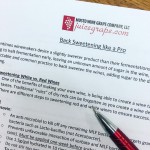


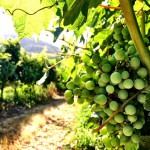
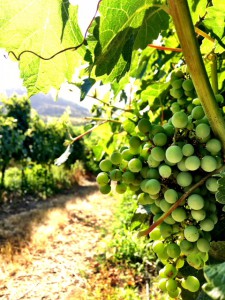
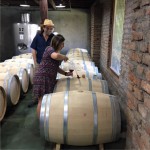
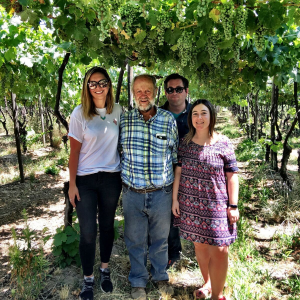
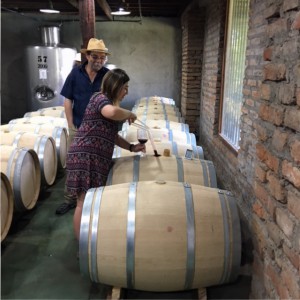

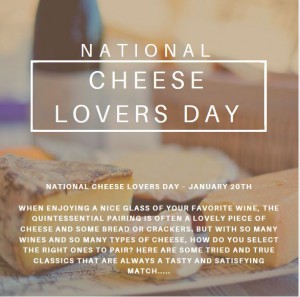
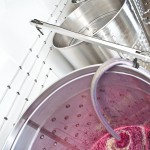



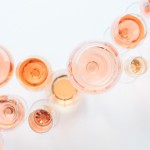
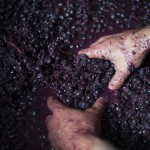

Recent Comments